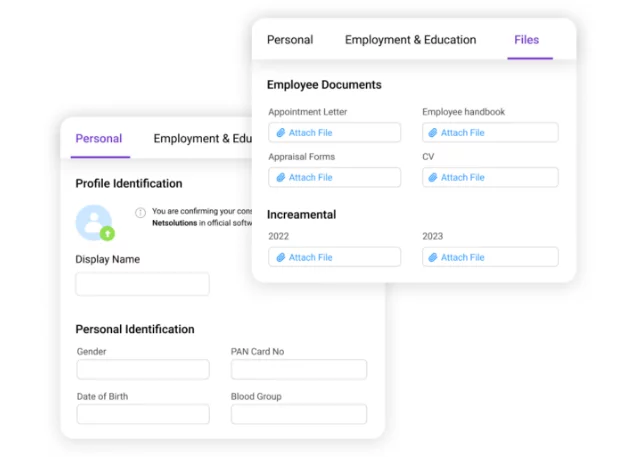As a business, your employees are an integral part of the organization. The talent you hire is going to have a direct effect on whether or not your company succeeds, and to what extent it succeeds.
There are lots of individuals out there that are looking for a job. According to Statista, there’s currently nationwide unemployment of 3.5%, as of July 2022.
So when it comes to hiring, you need to be selective. Once you’ve got your top talent, you don’t want to sabotage their initial experience of working for the company. With that said, a good onboarding process is crucial.
According to Sapling, onboarding can have some seriously positive outcomes. With employees who have exceptional onboarding experiences being 2.6 times more likely to be extremely satisfied in the workplace, it’s a great way to ensure employee retention. In fact, 70% of the people surveyed said they had the best job.
As an employee, having that kind of attitude towards work is invaluable for a company. With that said, this guide will explore the best practices and skills that are needed to make your employee onboarding experience the best. You’ll also understand the benefits that come with onboarding new workers in 2022 and beyond.
What is onboarding?
Onboarding is an HR term that is the process of introducing a new employee into the organization. It’s known as organizational socialization and helps to bring the new starter into the company.
It’s a majorly helpful process as it not only introduces the employee to the company but it also sets them up on the right foot. That way, as they navigate their new job, they do so with all the relevant knowledge and skills they need to successfully execute all their tasks.
With onboarding, 83% of employers currently have an employee onboarding solution in place. There are a variety of activities that come with onboarding which include:
- Job offer and salary negotiation
- Policy and culture training
- Benefits paperwork
- Team introductions
- Job training
There’s no official handbook on what’s included and what isn’t. It’s really all about tailoring it to the individual in question.

The best practices and skills for successful employee onboarding
Now that you know the basics of onboarding, here comes the important part. What are some of the best practices and skills for successful employee onboarding? However, employee onboarding checklist also help you keep track of the onboarding process itself. Despite what you choose to incorporate in the onboarding itself, here are a few must-haves for your list.
1. Use an employee onboarding software like Freshteam
To make the whole process easier, a great employee onboarding software can be helpful. Freshteam is employee onboarding software that helps cover all aspects of your onboarding process.
From sending out correspondence to new employees before their start date to checklists of job tasks that need allocating and completing as part of the process.

By having this software in place, you’re certainly going to make a big difference to everyone involved. Remember, those that are heading up the onboarding process are going to need to sacrifice some of their own time.
By minimizing that sacrifice through efficient and effective processes, you’re keeping your current staff happy too.
2. Form a team for onboarding using different departments
When you’re onboarding, chances are, the employee will need to know more than just their own job and department’s operation. There may be times when the employee will need to interact and work alongside those in other departments.
Form a team of onboarding staff from different departments. Their roles and tasks differ in volume from one to the next, allowing the new employee to grasp at the company as a whole.
It’s difficult to do this with conflicting schedules, but as long as you get their contribution to the onboarding process in some form, then it’s super helpful.
3. Make their first week a memorable one
As with any new job, that first day or week is a daunting one. For some, leaving a company after a long period of time is alienating. Starting in a new role within a new company? It’s quite a lot for that individual.
With that in mind, anything you do to make their first week a memorable one is going to be helpful. Not only to their mental well-being but to their first impression of the company. The more you contribute to the experience when onboarding, the more satisfied the new employee is.
Whilst training is important, try to organize one or two activities, whether this is in the office or outside of it. With happy employees being 12% more productive, it certainly benefits your new starters to have the best first week possible.
4. Keep to a schedule where possible
Your onboarding scheduling is something you want to plan ahead. It’s good to look through everything, to ensure you’ve included all the tasks necessary. That’s why employee onboarding software is useful to have as it creates a schedule and keeps everything in one place.
A basic schedule makes all of the difference. Take a look at this schedule example for an idea of what to do for your own onboarding process.
- Send out a pre-boarding message. A welcome email or quick phone call before the employee’s first official day can be beneficial.
- A personal introduction on the first day to other team members.
- Presentation of the organization, introducing its mission and values.
- First week activities include the handover of job and equipment.
- Set goals and manage expectations during this first week.
Over those first few months, track the progress of the staff member. This ensures all the onboarding has been beneficial to the individual in their role.
5. Communicate at all times before, during, and after onboarding
A big one that’s important with any business operations is communicating at all times. That’s including before, during, and after the onboarding process itself.
Before the individual starts, it’s important to open up that connection of communication with them. The new starter may have questions that need answering in order to prepare for their first day or week.
If there are multiple contributors to the onboarding process, communication needs to be there in order to keep everything on schedule. Things get lost easily if communication is lacking.
After the onboarding process, continue to check in with the new starter to answer any questions, track their progress and identify any room for improvement.
The benefits of onboarding
What’s the point in going to all the effort of onboarding? Well, there are a lot of benefits actually. If you’re wanting to give your new employees the best chance of growth and success in their job, then onboarding is a must.
Improved employee retention
Employee retention for any business is something that you want to keep high. Without a strong onboarding process in place, your new employees will be more inclined to go elsewhere.
Organizations that incorporate a strong onboarding process improve new hire retention by 82%. It’s an investment of time and effort that’s worth making.
Employees have more experience and knowledge
With the right level of onboarding, you provide your employees with more knowledge and experience. Sharing that wealth of skills and experience is only going to benefit your business further.
Your business is going to be a lot more professional when everyone in your workforce knows exactly what they’re doing. From their own job to a knowledge of business operations, it’s all helpful.
Strong company culture
With a strong workforce in knowledge, experience, and more importantly, happiness, you’ve got a great company culture. This is highly important as your company’s culture is a representation of your business.
Attract a better talent pool of individuals when it comes to future job openings. A lot of candidates looking for jobs often factor company culture into the reason for applying and accepting a job. Company culture is considered one of the most important factors with 46% of job seekers.
Spend time when creating a fantastic onboarding experience for employees
Remember, your employees are essential for your business. They are the cogs that keep your business machine turning day, after day. Spending the time to create an educational and enjoyable onboarding experience is only going to do wonders for your company.
From the planning and scheduling of the onboarding to the tools and employees you involve in the process, it all matters. Look at your current onboarding process and how you could improve it this year for any upcoming recruitment drives or job positions currently open.


